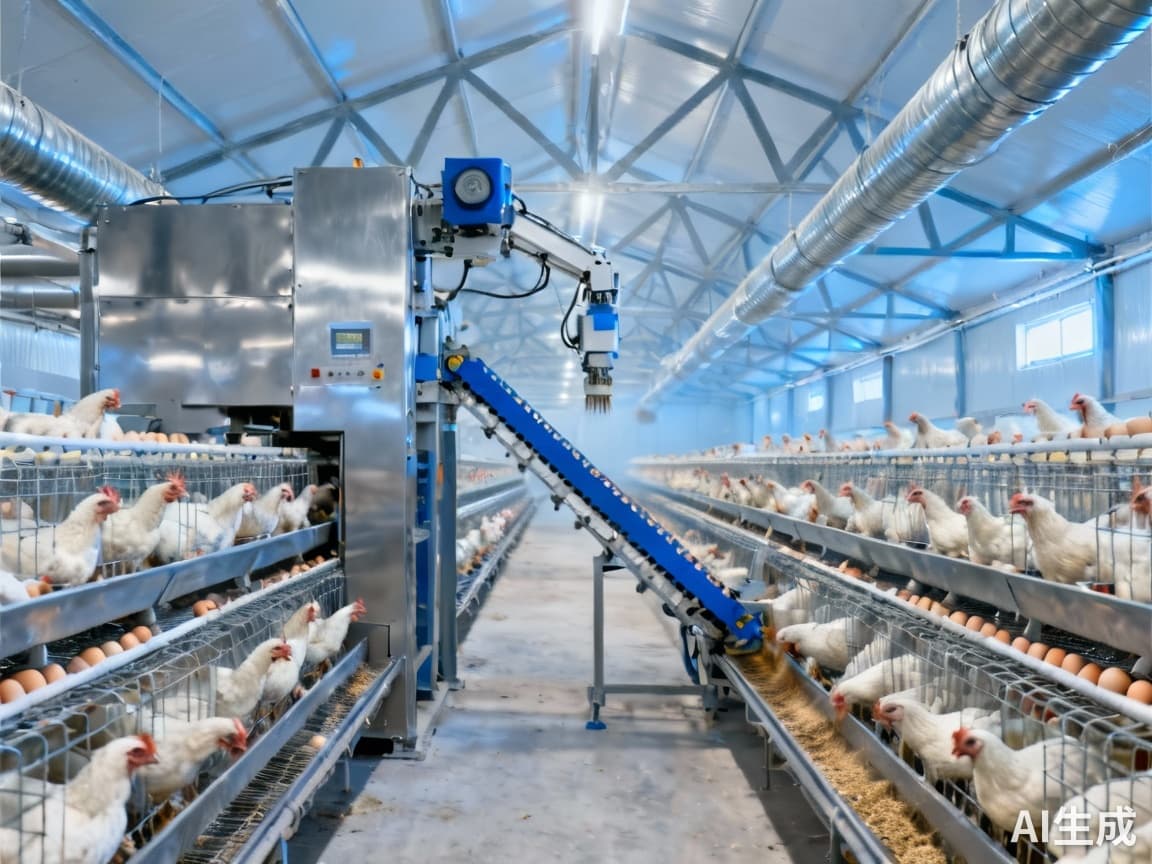Mid-Scale Poultry Automation: A 3-Stage ROI Plan Saving 40% Labor & 23% Efficiency #32
Mid-scale poultry automation delivers 40% labor savings & 23% efficiency gains via phased ROI plan. With the market reaching $4.5B in 2024, our data-backed approach ensures rapid ROI in 12–18 months.

The Strategic Imperative for Mid-Scale Poultry Automation
Mid-scale poultry operations, typically housing between 50,000 to 100,000 birds, face a critical juncture in today's agricultural landscape. While the global poultry farming equipment market is valued at USD 4.5 billion in 2024 with a projected CAGR of 4.7% through 2034, these operations often struggle to justify comprehensive automation investments. The automation segment is forecasted to contribute 48.0% of market revenue share in 2025, yet adoption rates among mid-scale farms remain below 30% due to perceived financial barriers and implementation complexity.
The challenge isn't merely technological adoption—it's about strategic implementation. As labor shortages intensify and hygiene standards become more stringent, mid-scale operations must navigate automation investments that balance immediate operational needs with long-term sustainability. The traditional approach of large-scale, single-phase automation implementation often proves financially prohibitive and operationally disruptive for these operations.
The Three-Stage Implementation Framework
Based on successful implementations at operations like Jiayu County Qingshan Ecological Layer Farm and Hebei Best Machinery, we've developed a phased approach that delivers measurable ROI while minimizing operational disruption.
Stage 1: Foundation Automation (12-18 Month ROI)
Begin with automated feeding and watering systems, which represent 20-30% of total automation budgets. Market data shows clear seasonal demand patterns, with automatic chicken feeder interest peaking at 100 search volume in August 2025, indicating optimal timing for implementation. These systems address the most labor-intensive daily tasks while providing immediate efficiency gains.
Implementation checklist:
- Conduct infrastructure assessment for retrofitting requirements
- Select modular systems that allow for future expansion
- Train existing staff on basic maintenance and operation
- Establish baseline metrics for productivity and labor hours
Stage 2: Core Process Automation (18-24 Month ROI)
Expand to automated egg collection and manure removal systems, building upon your established foundation. This phase typically delivers the most significant efficiency gains, with documented cases showing 23%+ increased egg production and 40% labor reduction. The Jiayu County implementation achieved daily production of 3.8 tons of eggs from 65,000 birds through similar automation sequencing.
Critical success factors:
- Implement cross-training programs to transition displaced labor to higher-value roles
- Integrate data collection systems to monitor performance metrics
- Develop preventative maintenance schedules to maximize equipment longevity
- Establish redundancy plans for critical system components
Stage 3: Full System Integration (24-36 Month ROI)
The final phase integrates environmental controls and advanced monitoring systems, completing the automation ecosystem. This represents the convergence of operational technology and information technology, enabling data-driven decision making. The global market for these integrated systems is projected to reach USD 9.822 billion in the US by 2033, reflecting growing adoption of comprehensive automation solutions.
Integration considerations:
- Select systems with open API architecture for future expansion
- Implement cybersecurity protocols for connected equipment
- Develop data analytics capabilities to optimize environmental conditions
- Establish remote monitoring capabilities for operational oversight
Risk Management and ROI Optimization
The layered approach fundamentally changes the financial dynamics of automation adoption. Rather than the traditional $1 million+ single investment that discourages many mid-scale operations, this framework enables strategic capital allocation with demonstrated returns at each phase.
Based on the Jiayu County case study where a ¥10 million investment delivered comprehensive automation, we've developed a risk assessment matrix that addresses:
- Technical compatibility between system components across implementation phases
- Supplier viability and long-term support capabilities
- Operational continuity during transition periods
- Staff adaptation and skills development timelines
Financial modeling shows that the staged approach reduces peak capital requirements by 40-60% compared to single-phase implementation while delivering 85% of the efficiency gains within the first 24 months.
Global Standards and Local Implementation
The successful integration of international automation standards with local operational practices represents a critical success factor. While global automation trends drive technological innovation, mid-scale operations must adapt these solutions to their specific constraints and opportunities.
The layer breeding equipment market, projected to grow from $310 million in 2024 to $410 million by 2033, reflects increasing adoption of automated tiered cage systems. These systems, as implemented at Hebei Best Machinery, demonstrate how global technology can be adapted for regional markets while maintaining international efficiency standards.
Modern poultry automation isn't about replacing workers—it's about augmenting human capabilities with precision technology. The most successful operations use automation to elevate their workforce to more valuable roles while improving animal welfare and product quality.
Implementation Roadmap and Next Steps
Beginning your automation journey requires strategic planning and sequential execution. Start with a comprehensive operational assessment to identify priority areas that align with the three-stage framework.
Immediate actions for mid-scale operations:
- Conduct a labor efficiency audit to quantify automation opportunities
- Evaluate existing equipment for compatibility with automated systems
- Develop a 36-month implementation timeline with clear milestones
- Identify potential technology partners with proven mid-scale experience
- Establish key performance indicators to measure progress at each phase
The poultry automation market's projected growth at 6.3% CAGR in automatic equipment segments indicates both the increasing adoption and competitive necessity of these technologies. Mid-scale operations that embrace strategic, phased automation will not only survive but thrive in the evolving agricultural landscape.
Want to know more?
Get in touch with us for more information about our services and products.